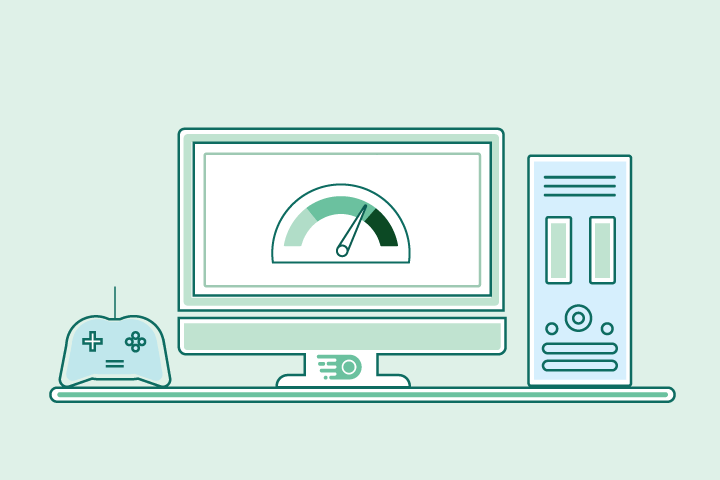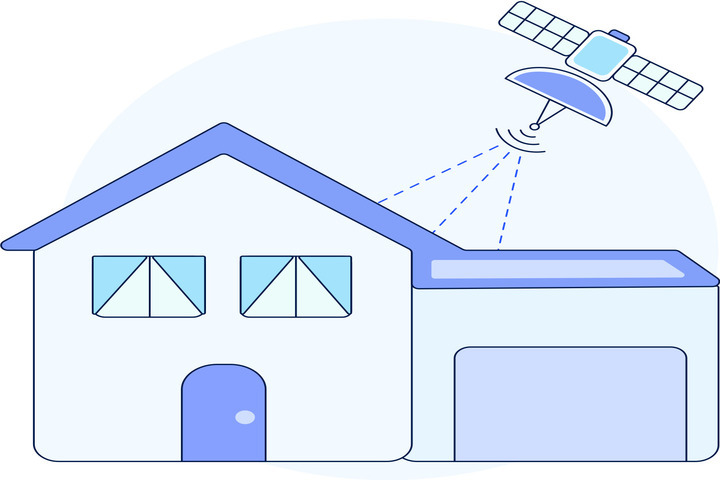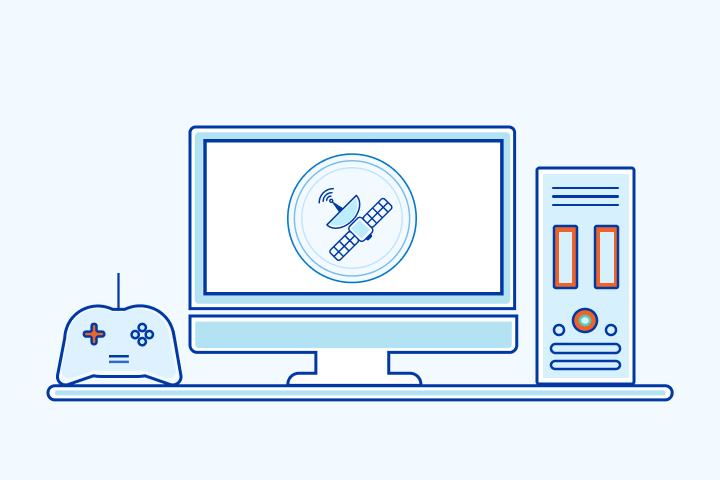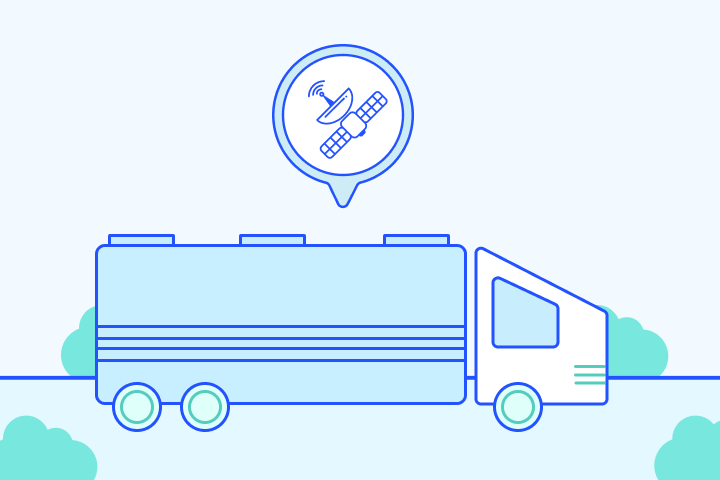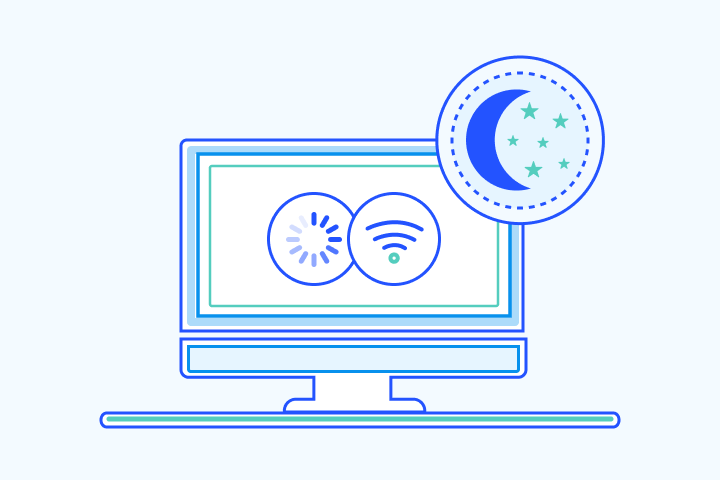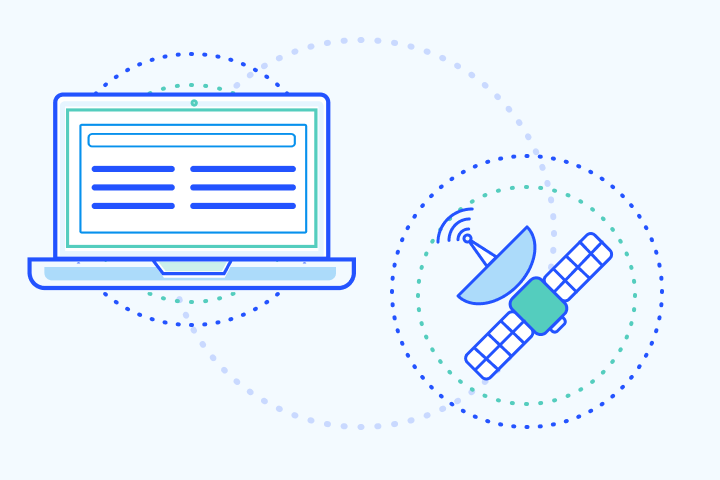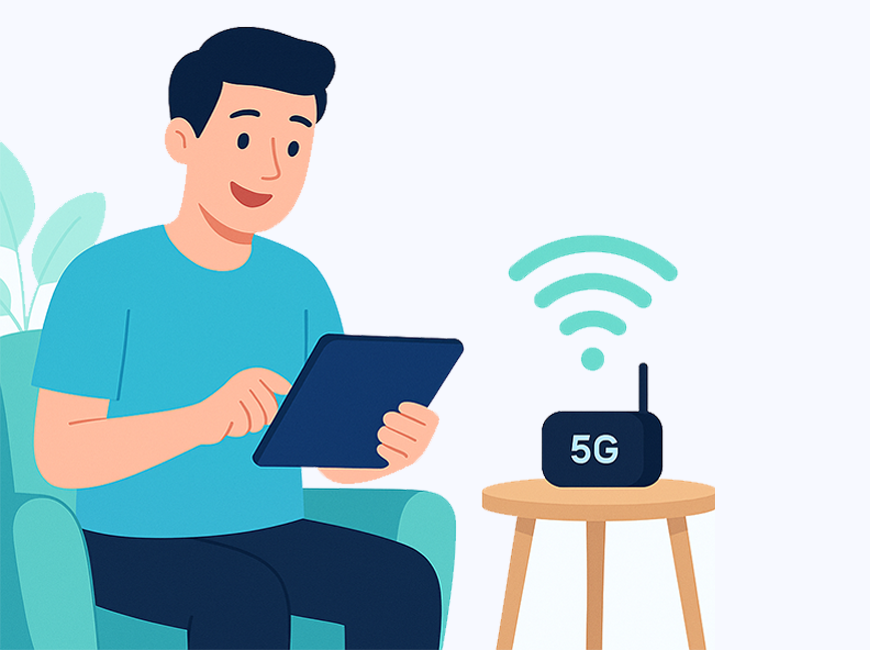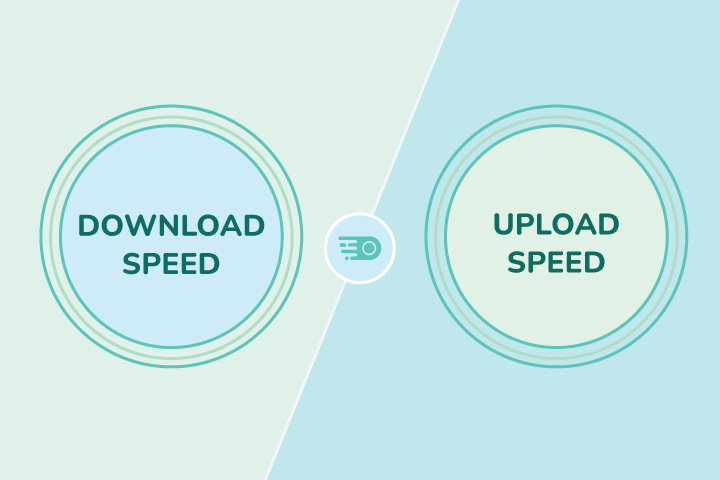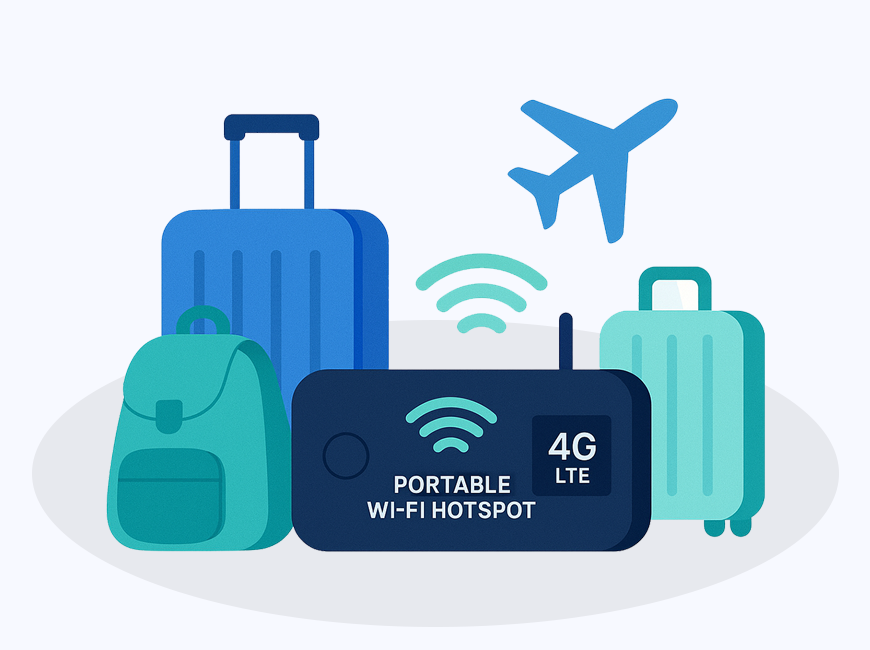5 Reasons Why Your Internet Keeps Disconnecting and How You Can Fix It
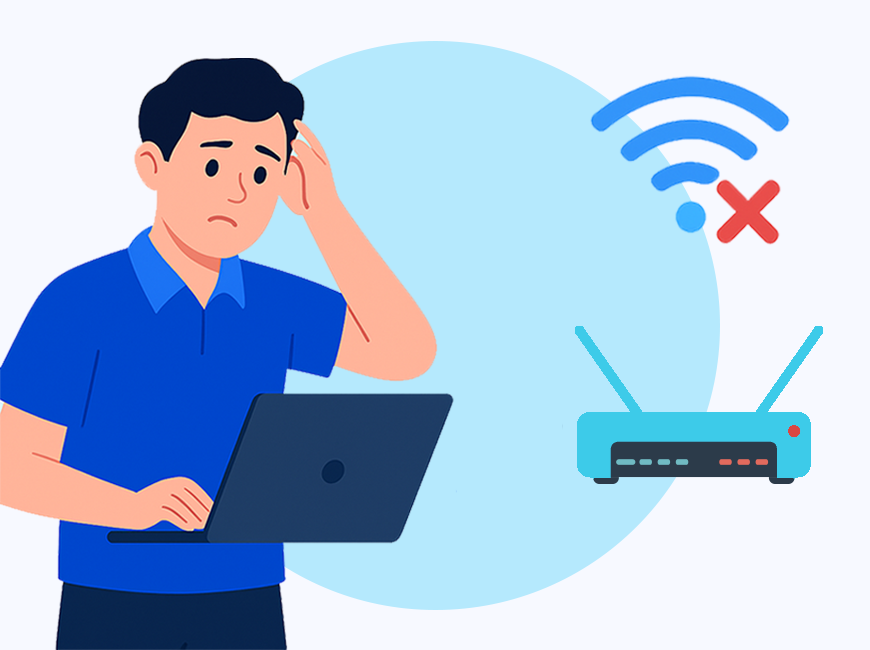
HighSpeedOptions prides itself on providing honest, quality content. While we may be compensated when you make a purchase through links on our site, all opinions are our own. Here's how we make money.
Table of Contents
If your internet connection drops like a flickering light, you’re not alone. According to the FCC, 19% of U.S. households experience at least one internet disruption per week. The good news: most disconnects have clear causes and straightforward fixes you can try at home. In this guide, you’ll learn how to diagnose the problem, apply step-by-step solutions, and decide when it’s time to call your internet provider (ISP) or upgrade your plan.
What you’ll learn:
- Why your internet keeps disconnecting (and what’s in your control)
- A quick diagnostic to determine if the issue is yours or your ISP’s
- The most common causes of disconnects and how to fix them
- Pro tips to prevent future issues
- When to escalate to your ISP or consider a new plan
How do I know if my internet provider is the problem?
To determine if the issue is with your ISP or within your home, run this simple diagnostic:
Test Wired vs. Wi‑Fi
- Connect a computer to your router or gateway with an Ethernet cable.
- If the wired connection is stable but Wi‑Fi drops, the issue is wireless (placement, interference, settings).
- If both wired and Wi‑Fi drop, it’s likely the modem, cabling, or ISP.
Run Ping and Traceroute
- Ping a reliable site (e.g., 8.8.8.8 or cloudflare.com) for 30–60 seconds.
- Consistent timeouts suggest an upstream or ISP issue.
- Spikes only on Wi‑Fi suggest local interference.
- Consistent timeouts suggest an upstream or ISP issue.
- Run traceroute (or tracert on Windows) to see where latency or timeouts occur (your router, your ISP, or beyond).
Check Your ISP’s Outage Map and Social Feeds
- Use your provider’s app or status page to confirm local outages or maintenance.
- A Consumer Reports survey found 38% of customers experienced at least one major ISP-related outage in the past year.
Compare Multiple Devices
- If only one device drops, it’s likely a device-specific software/driver or settings issue.
- If all devices drop, it’s your network, wiring, or ISP.
If the results of the diagnostic indicate that its a local issue (Wi‑Fi, device, modem/router, cables), then proceed with fixes below. If its an issue with your ISP (consistent wired drops, confirmed outage), contact your provideror wait for connectivity to be restored.
What Are the Most Common Reasons My Internet Keeps Disconnecting?
Here’s a quick, scannable list for fast answers:
- Hardware problems (aging modem/router, bad cables, failing power)
- Weak Wi‑Fi signal or interference
- Network congestion or bandwidth limits
- ISP instability or outages
- Software, driver, or IP conflicts
- Security issues or unauthorized devices
- Overheating or hardware fail-safes
Studies show Wi‑Fi signal interference causes 30–50% of home internet performance issues.
7 Main Causes of Disconnecting Internet and How to Fix Them
1. Hardware & Setup Issues
Common causes:
- Outdated modem/router or incompatible equipment
- Damaged, loose, or poorly terminated cables (coax, Ethernet, fiber jumpers)
- Overloaded or glitchy devices after long uptimes
Fast fixes:
- Power cycle in order:
- Unplug modem/gateway power for 60 seconds.
- Unplug router power for another 60 seconds.
- Plug in modem/gateway; wait 2–3 minutes until lights stabilize.
- Plug in router; wait 2 minutes until Wi‑Fi appears.
- Unplug modem/gateway power for 60 seconds.
- Check LED status lights:
- Modem: Verify online/Internet light is solid.
- Router: Confirm WAN/internet light is on; Wi‑Fi bands are broadcasting.
- Modem: Verify online/Internet light is solid.
- Inspect cabling:
- Coax should be snug (hand-tight). Look for kinks, chew marks, or bent pins.
- Ethernet should click into place; replace any cable with broken clips or visible damage.
- Coax should be snug (hand-tight). Look for kinks, chew marks, or bent pins.
- Replace aging hardware:
- The average router lifespan is 3–5 years before performance significantly degrades. If yours is older—or doesn’t support your plan speed—upgrade.
- The average router lifespan is 3–5 years before performance significantly degrades. If yours is older—or doesn’t support your plan speed—upgrade.
- Confirm compatibility:
- If you own your modem, ensure it’s approved for your ISP and plan speed.
- If you own your modem, ensure it’s approved for your ISP and plan speed.
When to escalate:
- LEDs show frequent loss of signal despite good cabling.
- Frequent reboots needed to stay online.
- ISP can’t validate your modem’s registration or signal levels remotely.
Quick Fix Summary: Power cycle your modem and router, reseat cables, and check LED lights first. Replace hardware if it’s 3–5+ years old or if your ISP can’t validate your modem.
Summary of Hardware & Setup Issues
| Issue | Likely Cause | Fix | When to Escalate |
| Router/modem drops | Outdated hardware, overheating, or glitches after long uptime | Power cycle, check LED lights, replace aging hardware | Frequent reboots, ISP cannot validate modem, LEDs show signal loss |
| Cable issues | Loose, damaged, or incompatible coax/Ethernet | Inspect/replace damaged cables | If cables look fine but connection still fails |
| Incompatibility | Modem not approved for ISP plan | Confirm ISP compatibility list | ISP confirms equipment not supported |
| Issue | Router/modem drops |
| Likely Cause | Outdated hardware, overheating, or glitches after long uptime |
| Fix | Power cycle, check LED lights, replace aging hardware |
| When to Escalate | Frequent reboots, ISP cannot validate modem, LEDs show signal loss |
| Issue | Cable issues |
| Likely Cause | Loose, damaged, or incompatible coax/Ethernet |
| Fix | Inspect/replace damaged cables |
| When to Escalate | If cables look fine but connection still fails |
| Issue | Incompatibility |
| Likely Cause | Modem not approved for ISP plan |
| Fix | Confirm ISP compatibility list |
| When to Escalate | ISP confirms equipment not supported |
2. Wi‑Fi Signal & Interference
Common causes:
- Router placed in a corner, closet, or behind dense materials
- Competing networks on the same channel (apartments, townhomes)
- Nearby electronics causing interference (microwaves, baby monitors, cordless phones)
Fast fixes:
- Improve placement:
- Move router to a central, elevated spot with line of sight to main areas.
- Avoid placing it behind metal, near tile, or next to a fish tank. A Wi‑Fi signal can lose up to 50% of its strength for every wall it passes through.
- Move router to a central, elevated spot with line of sight to main areas.
- Optimize channels and bands:
- Use 5 GHz for speed and less interference; use 2.4 GHz for longer range.
- Log into your router and set channels to less crowded options (use a Wi‑Fi analyzer app).
- Use 5 GHz for speed and less interference; use 2.4 GHz for longer range.
- Update antennas and firmware:
- Reposition antennas (one vertical, one horizontal) on dual-antenna routers.
- Update router firmware to improve stability and roaming.
- Reposition antennas (one vertical, one horizontal) on dual-antenna routers.
- Consider upgrades:
- Add a mesh Wi‑Fi system for larger homes or multi-story layouts.
- Add a mesh Wi‑Fi system for larger homes or multi-story layouts.
When to escalate:
- Wired works flawlessly, but Wi‑Fi remains unstable after channel and placement changes.
- Persistent interference from neighbors you cannot mitigate without advanced features (consider a Wi‑Fi 6/6E router).
Quick Fix Summary: Reposition your router to a central, elevated spot, switch channels, and update firmware. If wired is stable but Wi-Fi stays unreliable, consider a mesh system or Wi-Fi 6/6E router.
Summary of Wi-Fi & Signal Interference Issues
| Issue | Likely Cause | Fix | When to Escalate |
| Wi-Fi drops in certain rooms | Poor placement, walls, interference | Move router centrally, elevate, avoid metal/tile, use 5 GHz | Wired is stable but Wi-Fi still fails after optimization |
| Competing networks | Crowded channels, overlapping SSIDs | Use analyzer app, set less-crowded channels | Persistent neighbor interference; upgrade to Wi-Fi 6/6E |
| Interference from devices | Microwaves, baby monitors, cordless phones | Relocate router or devices, switch bands | None — must mitigate or upgrade equipment |
| Issue | Wi-Fi drops in certain rooms |
| Likely Cause | Poor placement, walls, interference |
| Fix | Move router centrally, elevate, avoid metal/tile, use 5 GHz |
| When to Escalate | Wired is stable but Wi-Fi still fails after optimization |
| Issue | Competing networks |
| Likely Cause | Crowded channels, overlapping SSIDs |
| Fix | Use analyzer app, set less-crowded channels |
| When to Escalate | Persistent neighbor interference; upgrade to Wi-Fi 6/6E |
| Issue | Interference from devices |
| Likely Cause | Microwaves, baby monitors, cordless phones |
| Fix | Relocate router or devices, switch bands |
| When to Escalate | None â must mitigate or upgrade equipment |
3. Network Overload & Bandwidth Limits
Common causes:
- Too many devices streaming, gaming, or video conferencing at once
- Data caps or throttling after exceeding monthly limits
- Plan speed too low for household usage
Fast fixes:
- Check your plan speed and actual needs:
- As a baseline, reserve ~100 Mbps per active adult user during peak use.
- The average U.S. household now has 22 connected devices, up from 11 in 2019. Factor in smart TVs, cameras, consoles, and IoT devices.
- As a baseline, reserve ~100 Mbps per active adult user during peak use.
- Enable QoS (Quality of Service):
- Prioritize real-time traffic (work calls, gaming) over bulk downloads.
- Prioritize real-time traffic (work calls, gaming) over bulk downloads.
- Schedule heavy tasks:
- Set cloud backups and large updates to run overnight.
- Set cloud backups and large updates to run overnight.
- Consider a plan or hardware upgrade:
- If your router ports max at 1 Gbps, they’ll bottleneck faster plans.
- If your plan is underpowered for your household, upgrade to higher speeds or fiber where available.
- If your router ports max at 1 Gbps, they’ll bottleneck faster plans.
When to escalate:
- You’re consistently saturating your plan despite QoS and scheduling.
- You suspect throttling—speeds drop at specific times or after hitting a data threshold.
Quick Fix Summary: Enable QoS, schedule heavy tasks off-peak, and check if your plan speed meets household demand. If throttling or congestion continues, upgrade to a higher-speed plan.
Summary of Network Overload & Bandwidth Limits
| Issue | Likely Cause | Fix | When to Escalate |
| Multiple devices saturating bandwidth | Too many streams, gaming, or calls | Enable QoS, schedule downloads, upgrade plan | If congestion persists despite QoS and scheduling |
| Sudden slowdowns | ISP data caps or throttling | Check plan limits, compare VPN vs non-VPN speeds | Consistent throttling → escalate with ISP or change provider |
| Low plan speed | Household needs exceed plan | Upgrade to higher speed or fiber | When plan max speed is still insufficient |
| Issue | Multiple devices saturating bandwidth |
| Likely Cause | Too many streams, gaming, or calls |
| Fix | Enable QoS, schedule downloads, upgrade plan |
| When to Escalate | If congestion persists despite QoS and scheduling |
| Issue | Sudden slowdowns |
| Likely Cause | ISP data caps or throttling |
| Fix | Check plan limits, compare VPN vs non-VPN speeds |
| When to Escalate | Consistent throttling â escalate with ISP or change provider |
| Issue | Low plan speed |
| Likely Cause | Household needs exceed plan |
| Fix | Upgrade to higher speed or fiber |
| When to Escalate | When plan max speed is still insufficient |
4. ISP-Related Instability
Common causes:
- Area outages, maintenance, weather, or line noise
- Congestion at the neighborhood node
- Throttling of certain traffic types
Fast fixes:
- Verify outages:
- Check your ISP’s app, status page, or social feeds for updates.
- Check your ISP’s app, status page, or social feeds for updates.
- Call support and request:
- Signal and error log checks on your line.
- A technician visit to test at the tap, pedestal, or ONT if problems persist.
- Signal and error log checks on your line.
- Keep a record:
- Note dates, times, and duration of drops. Ask for credits if outages are frequent.
- Note dates, times, and duration of drops. Ask for credits if outages are frequent.
Key stat:
- Over 25% of customers report experiencing slower-than-advertised speeds due to throttling.
When to consider switching to another internet provider:
- Repeated outages or chronic congestion with no improvement.
- Your area has fiber or 5G home internet that could offer better stability.
Quick Fix Summary: Confirm outages via your ISP’s app or status page, keep a record of drops, and call support for line checks. If instability is chronic, escalate or explore switching providers.
Summary of ISP-Related Instability
| Issue | Likely Cause | Fix | When to Escalate |
| Frequent drops | ISP outage, line noise, congestion | Check ISP app/status page, call support | Repeated outages, unresolved congestion |
| Throttling | ISP slows certain traffic | Test via VPN, log times, compare | Persistent throttling without resolution |
| Weather/maintenance | Temporary external disruptions | Confirm via ISP communication | If frequent or long-lasting |
| Issue | Frequent drops |
| Likely Cause | ISP outage, line noise, congestion |
| Fix | Check ISP app/status page, call support |
| When to Escalate | Repeated outages, unresolved congestion |
| Issue | Throttling |
| Likely Cause | ISP slows certain traffic |
| Fix | Test via VPN, log times, compare |
| When to Escalate | Persistent throttling without resolution |
| Issue | Weather/maintenance |
| Likely Cause | Temporary external disruptions |
| Fix | Confirm via ISP communication |
| When to Escalate | If frequent or long-lasting |
5. Software, Drivers & IP Issues
Common causes:
- Outdated router or modem firmware
- Outdated network drivers on your device
- DHCP conflicts or lease issues causing IP changes and drops
Fast fixes:
- Update everything:
- Modem/router firmware via the admin interface.
- Network adapter drivers (Windows: Device Manager > Network Adapters > Update Driver).
- Modem/router firmware via the admin interface.
- Reset network settings (Windows):
- Settings > Network & Internet > Advanced network settings > Network reset. Note: this forgets networks and may remove VPNs/firewalls; have your credentials ready.
- Settings > Network & Internet > Advanced network settings > Network reset. Note: this forgets networks and may remove VPNs/firewalls; have your credentials ready.
- Renew IP/DHCP lease:
- Reboot router, then device. Or disable/enable the network adapter.
- Reboot router, then device. Or disable/enable the network adapter.
- Assign a static IP:
- For devices that drop often, reserve IPs in the router’s DHCP settings.
- For devices that drop often, reserve IPs in the router’s DHCP settings.
Quick Fix Summary: Update router firmware, device drivers, and renew IP leases. If connection errors persist after updates and resets, escalate with your ISP or replace problem devices.
Summary of Software, Drivers & IP Issues
| Issue | Likely Cause | Fix | When to Escalate |
| Connection errors | Outdated router/modem firmware | Update firmware via admin panel | Persistent errors post-update |
| Device drops | Outdated drivers, DHCP/IP conflicts | Update drivers, reset network, assign static IP | If device still unstable across updates |
| Random IP changes | Lease conflicts | Renew IP/DHCP, assign static IP | Persistent conflicts across devices |
| Issue | Connection errors |
| Likely Cause | Outdated router/modem firmware |
| Fix | Update firmware via admin panel |
| When to Escalate | Persistent errors post-update |
| Issue | Device drops |
| Likely Cause | Outdated drivers, DHCP/IP conflicts |
| Fix | Update drivers, reset network, assign static IP |
| When to Escalate | If device still unstable across updates |
| Issue | Random IP changes |
| Likely Cause | Lease conflicts |
| Fix | Renew IP/DHCP, assign static IP |
| When to Escalate | Persistent conflicts across devices |
6. Security & Unauthorized Access
Over 30% of Wi‑Fi networks worldwide are unsecured or use outdated security protocols. Use the steps below to protect your network:
Common causes:
- Weak Wi‑Fi password or outdated security (WEP, unsecured)
- Unknown devices using bandwidth
- Malware or misconfigured firewalls blocking legitimate traffic
Fast fixes:
- Secure your network:
- Use WPA3 (or WPA2 if WPA3 isn’t available). Avoid WEP.
- Change Wi‑Fi passwords and admin router passwords.
- Use WPA3 (or WPA2 if WPA3 isn’t available). Avoid WEP.
- Monitor connected devices:
- In the router interface, review the device list. Block unknown devices.
- In the router interface, review the device list. Block unknown devices.
- Update antivirus and run scans:
- Ensure definitions are current. Temporarily disable to test if it’s blocking traffic; re‑enable immediately after testing.
Quick Fix Summary: Secure your Wi-Fi with WPA2/WPA3, change passwords, and remove unknown devices. Run malware scans if issues persist. Escalate if unauthorized access continues despite security upgrades.
Summary of Security & Unauthorized Access Issues
| Issue | Likely Cause | Fix | When to Escalate |
| Unknown devices on network | Weak or outdated Wi-Fi security | Switch to WPA2/WPA3, change passwords | If devices keep reappearing despite secure setup |
| Malware/firewall issues | Software blocking legitimate traffic | Run antivirus, adjust firewall | If repeated disconnections persist post-cleanup |
| Bandwidth theft | Unauthorized users streaming/gaming | Block devices in router settings | None — once secured, issue should resolve |
| Issue | Unknown devices on network |
| Likely Cause | Weak or outdated Wi-Fi security |
| Fix | Switch to WPA2/WPA3, change passwords |
| When to Escalate | If devices keep reappearing despite secure setup |
| Issue | Malware/firewall issues |
| Likely Cause | Software blocking legitimate traffic |
| Fix | Run antivirus, adjust firewall |
| When to Escalate | If repeated disconnections persist post-cleanup |
| Issue | Bandwidth theft |
| Likely Cause | Unauthorized users streaming/gaming |
| Fix | Block devices in router settings |
| When to Escalate | None â once secured, issue should resolve |
7. Overheating or Hardware Fail‑Safes
Common causes:
- Modem/router in enclosed cabinets, near heat sources, or stacked
- Heavy workloads pushing older hardware to thermal limits
Fast fixes:
- Improve ventilation:
- Move equipment to open air; dust vents; avoid stacking devices.
- Move equipment to open air; dust vents; avoid stacking devices.
- Reduce load:
- Disable unused features or guest networks if not needed.
- Disable unused features or guest networks if not needed.
- Upgrade aging hardware:
- Newer routers handle more devices, higher speeds, and heat better.
Quick Fix Summary: Improve ventilation and dust your equipment to prevent thermal shutdowns. If devices still overheat or disconnect under normal load, replace aging hardware.
Summary of Overheating or Hardware Fail-Safes
| Issue | Likely Cause | Fix | When to Escalate |
| Devices shut down or reboot | Router/modem overheating | Improve ventilation, clean vents | If hardware continues to overheat despite airflow |
| Sudden disconnects under load | Hardware throttling due to age | Reduce load, disable guest networks | Replace router/modem if issues persist |
| Issue | Devices shut down or reboot |
| Likely Cause | Router/modem overheating |
| Fix | Improve ventilation, clean vents |
| When to Escalate | If hardware continues to overheat despite airflow |
| Issue | Sudden disconnects under load |
| Likely Cause | Hardware throttling due to age |
| Fix | Reduce load, disable guest networks |
| When to Escalate | Replace router/modem if issues persist |
Step-by-Step Troubleshooting You Can Do at Home
Follow this order to isolate and fix fast:
1) Reboot and reseat
- Power cycle modem and router (60 seconds unplugged).
- Reseat all coax and Ethernet connections; replace any damaged cables.
2) Test wired vs. Wi‑Fi
- If wired is stable, focus on Wi‑Fi placement, channels, and interference.
- If wired also drops, continue with modem/ISP checks.
3) Check for outages and signal issues
- Use ISP app/status page. If none reported, call and ask for line diagnostics.
4) Optimize Wi‑Fi
- Move router to a central, open location.
- Switch to 5 GHz for close devices; 2.4 GHz for longer range.
- Change channels based on a Wi‑Fi analyzer.
5) Update software and firmware
- Update router/modem firmware.
- Update OS and network drivers on your devices.
6) Manage load and QoS
- Enable QoS on your router for conferencing and gaming.
- Schedule backups and large downloads off-peak.
7) Secure and monitor
- Update Wi‑Fi security to WPA3/WPA2.
- Change passwords and remove unknown devices.
8) Run diagnostics
- Ping and traceroute to identify where drops occur.
- Check router logs for recurring error messages or reboots.
9) Reset as a last resort
- Router factory reset if configuration is corrupted (reconfigure after).
- Windows network reset if device issues persist.
If these steps don’t resolve the problem, contact your ISP for a line test or schedule a technician visit.
Troubleshooting Quick Fix Summary:
- Reboot & reseat hardware and cables first — this solves most temporary issues.
- Test wired vs. Wi-Fi to identify whether the problem is local (Wi-Fi, devices) or systemic (modem/ISP).
- Check for outages before spending time on local fixes.
- Optimize Wi-Fi placement, channels, and band use if wired works but wireless doesn’t.
- Update software & firmware regularly to avoid stale bugs.
- Manage load with QoS and scheduled downloads to prevent congestion.
- Secure your network with WPA2/WPA3 and monitor connected devices.
- Run diagnostics (ping/traceroute, router logs) to pinpoint issues.
- Reset as a last resort if all else fails, then escalate to your ISP.
Bottom line: If your connection still drops after these steps, it’s likely an ISP or line-level issue — contact support for a signal test or technician visit.
Pro Tips: Prevent Disconnects Before They Happen
- Use monitoring tools:
- Obkio and PingPlotter can chart latency, jitter, and packet loss over time to prove issues to your ISP.
- Obkio and PingPlotter can chart latency, jitter, and packet loss over time to prove issues to your ISP.
- Update on a schedule:
- Check for router firmware updates quarterly; enable auto-updates if supported.
- Check for router firmware updates quarterly; enable auto-updates if supported.
- Replace proactively:
- Plan to replace routers every 3–5 years or when your plan speed/coverage needs increase.
- Plan to replace routers every 3–5 years or when your plan speed/coverage needs increase.
- Isolate IoT on a guest network:
- Keep smart devices separate to reduce congestion and security risks.
- Keep smart devices separate to reduce congestion and security risks.
- Document patterns:
- Note times and activities when drops happen (e.g., only during video calls, only evenings). Patterns point to root causes quickly.
Keep Your Internet Connected Without the Frustration
Most disconnects have identifiable causes and practical fixes:
- Check hardware and cables.
- Optimize Wi‑Fi placement and channels.
- Manage bandwidth and device load; enable QoS.
- Update firmware and drivers regularly.
- Monitor your network for issues and document patterns.
Know when to escalate:
- If wired drops persist, call your ISP to check signals, logs, and local infrastructure.
- If outages or throttling are frequent, consider switching plans or providers.
Do you need to compare fiber, cable, or 5G home internet plans? Enter your ZIP code below to find a reliable connection that fits your home and usage needs.
FAQs: Quick Answers
Evening slowdowns and drops often stem from neighborhood congestion (peak usage hours) or bandwidth saturation at home. Enable QoS, schedule heavy downloads off-peak, and consider upgrading to a higher-speed or fiber plan if available.
Yes. Routers and modems are small computers. A reboot clears memory errors and stale connections. Power cycle both devices for 60 seconds to restore a clean state.
Look for consistent slowdowns after hitting data caps or at specific times. Compare speed tests over VPN and without VPN; if speeds improve on VPN, throttling is possible. Contact your ISP for plan details.
Slow internet means consistent but low speeds (often congestion or low plan speed). Unstable internet means intermittent drops, timeouts, or high packet loss (often wiring, Wi‑Fi interference, or ISP line issues).
Signal weakens through walls and floors and can be blocked by metal or tile. Move the router to a central location, switch bands, change channels, or add mesh nodes.
If wired speeds match your plan but Wi‑Fi is poor, replace or upgrade the router. If even wired speeds can’t meet your needs, upgrade your plan. Many homes benefit from doing both.
Yes. Overheated modems/routers can throttle or reboot. Improve ventilation, reduce load, and replace devices that run hot.
Online gaming requires stable, low-latency connections, so even small bandwidth conflicts can cause disconnects. High household demand, misconfigured Quality of Service (QoS), or ISP throttling can all trigger lag or drops. Using a wired connection, enabling QoS for gaming, and checking for throttling are the best first steps.
Share timestamps of drops, results of wired vs. Wi‑Fi tests, ping/traceroute findings, and any router log errors. Ask for a signal-level check and a technician visit if issues persist.
If only your laptop drops while other devices stay connected, the issue is usually local to the laptop itself. Outdated network drivers, corrupted Wi-Fi profiles, or power management settings can all cause instability. Try updating drivers, forgetting and rejoining your Wi-Fi, or running a full network reset.
Find providers in your area
Table of Contents



